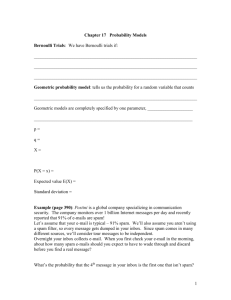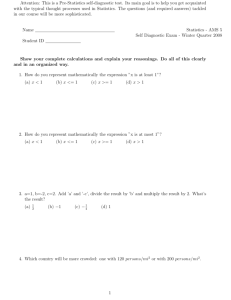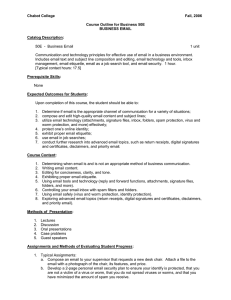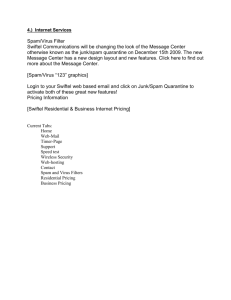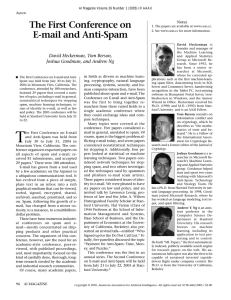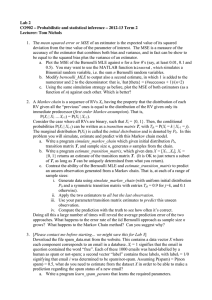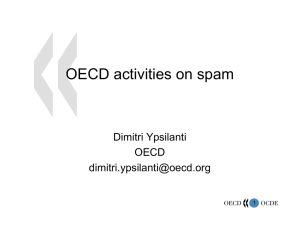Document 10540768
advertisement
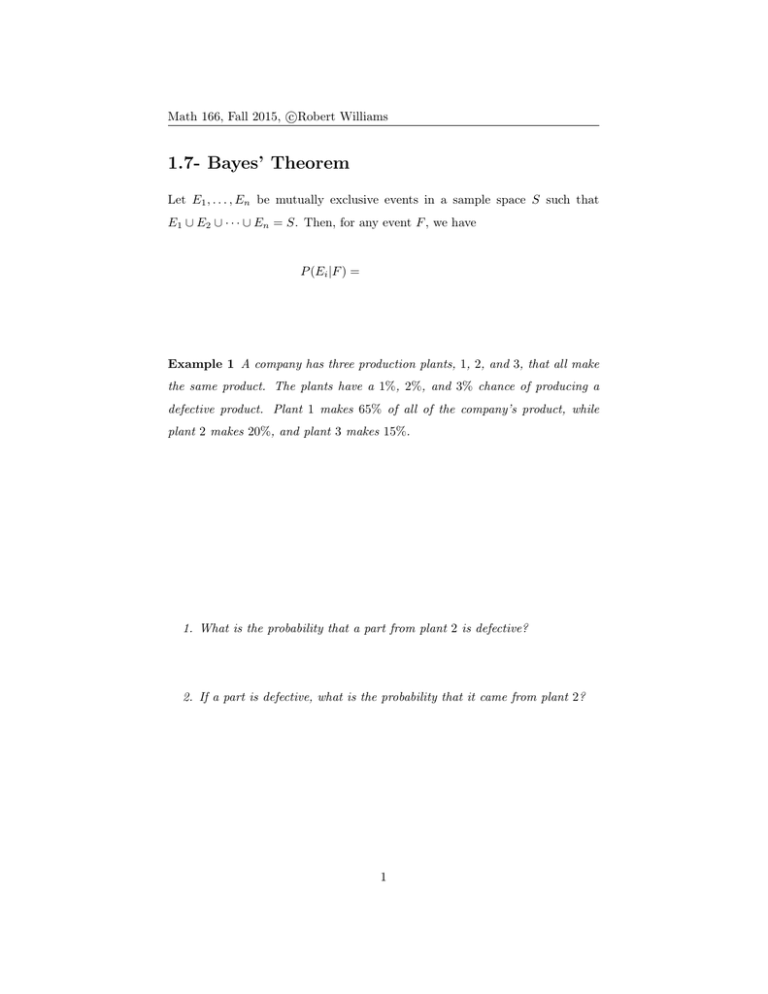
c Math 166, Fall 2015, Robert Williams 1.7- Bayes’ Theorem Let E1 , . . . , En be mutually exclusive events in a sample space S such that E1 ∪ E2 ∪ · · · ∪ En = S. Then, for any event F , we have P (Ei |F ) = Example 1 A company has three production plants, 1, 2, and 3, that all make the same product. The plants have a 1%, 2%, and 3% chance of producing a defective product. Plant 1 makes 65% of all of the company’s product, while plant 2 makes 20%, and plant 3 makes 15%. 1. What is the probability that a part from plant 2 is defective? 2. If a part is defective, what is the probability that it came from plant 2? 1 c Math 166, Fall 2015, Robert Williams Example 2 Your email’s spam filter works by scanning the content of an email for poor spelling, suspicious links, suspicious origins, and common phrases used in spam. Y0ur filter correctly identifies spam and filters it from your inbox 95% of the time, but it incorrectly identifies important email as spam 3% of the time. You estimate that roughly 60% of the email you recieve is spam. 1. What is the probability that a desired piece of email is placed in your inbox? 2. What is the probability that spam is placed in your inbox? 3. If an email is in your inbox, what is the probability that it is spam? 4. If an email is filtered to your spam folder, what is the probability that it was desired? 2 c Math 166, Fall 2015, Robert Williams Example 3 There is widespread panic over the spread of a new contagious disease. It is estimated that the probability of someone having the disease is only 0.012. A test is developed that will successfully detect the presence of the disease 99.9% of the time, but it gives a false positve 2% of the time. 1. The test comes up negative for a patient. What is the probability that the patient has the disease? 2. What is the probability that a patient is disease-free and the test comes up negative? 3. The test comes up positive for a patient. What is the probability that the patient has the disease? 3

